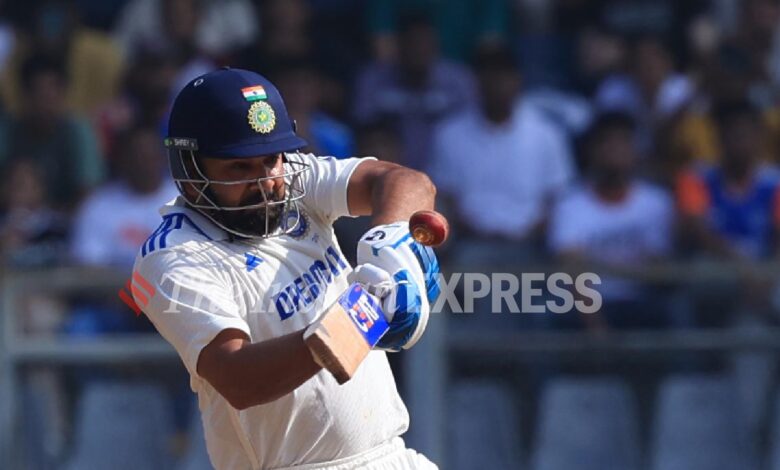Rohit Sharma’s hyper-aggro batting methods didn’t pay off, tactical errors creeped into captaincy, now it’s time for introspection | Cricket News

Five months ago, the Wankhede Stadium was a happier place for Rohit Sharma. In the crimson twilight of this majestic arena, he stood hoing the World T20 trophy. He smiled throughout the evening that began with an open-roof bus parade through the Marine Drive stretch, where fervid fans chanted his name and wore his masks. He soaked in the most glorious hour of his career as World Cup-winning captain.
Five months later, in one of the cruellest sporting paradoxes in Indian cricket, Wankhede made him endure his darkest hour in the sport. The fate of being the first ever Indian captain to experience a Test series whitewash at home (minimum 2 Tests). The stands were grieving, the streets were mourning. In the press-conference room, he tried to force a smile, he sought to put on a veneer of defiance, he sought the grand platitude of sports being an eternal leveller, he called for calm, he pleaded patience, he owned up the losses, he shouldered the blame and burden, yet he felt depressingly hollow. His eyes couldn’t hide the hurt.
He pondered on the vicissitudes of sporting careers. “It is quite tough. One day you’re on a high, one day you’re not. That is something that I’ve learned at a young age about life. It has taught me to not get carried away,” he said.
Rohit would know. The long struggle that was his childhood, the toil to strive for consency, the fight for a permanent spot, the ill-timed injuries, the precious gifts that became a baggage, the career slipping away. He is battle-hardened, has steel beneath his silk, and has waged several comebacks and swatted the setbacks aside. He is not alone in this fate. The great Sachin Tendulkar was booed on the same ground, years later, he was paraded on the shoulders of his young teammates.
As encouraging as the life lessons could be, he finds himself in the shadows of uncertainty. He is 37, a nudge away from the sunset. The clarity of approach, the wisdom to segregate formats, have deserted him. He is punch-drunk with the intoxicating success his hyper-aggro methods have reaped in the white ball cricket. “As you grow, you try and evolve. I am trying to evolve as a batter as well to try and see what else I can do. So, in that, there is a chance that you can fall on the other side of it, which clearly I have. I will relook at my game and see what best I can do,” he reasoned.
He was probed about his defensive strokes, largely invisible these days. “I haven’t defended a lot in this series because I haven’t been there much to defend. I have to look at my own game and try and see what best I can do. When I go to bat, I always think about how I can put the team in the best situation of the game so sometimes when the openers go in, they set the tone.”
Perhaps, it’s a sign of the times. Run-rates and maximums are the new Test match fetishes. Perhaps, this is the fuel that drives him too. But at a certain age, the transitions are not as smooth as it once used to be. Even thespians struggle to internalise new and challenging roles. Perhaps, one day he would rediscover the formula and enjoy a late-career blaze of glory. But in the present form, his ideals and approach seem half-baked. A case of him not striking a judicious balance between attack and defence. More than the runs he scored this series (91), it’s the balls he has faced (133) that worries him. Certainly, the manner of the dismissals. The Kanpur onslaught worked out, but that couldn’t be a template for beating stronger teams on more difficult surfaces.
The biggest loser in the personal flux is the team itself. In the post Cheteshwar Pujara-Ajinkya Rahane era, he is India’s second most experienced batsman. With Virat Kohli struggling for runs, the younger group still teething in, he is perhaps the most important top-order batsman. He can’t afford to squander his wickets cheaply.
When the batting lacks clarity, it sometimes spills onto captaincy too. The best days on the field as captain have often coincided with his best days with the bat. Rohit is a progressive captain, one reliant on creating good vibes in the dressing room as well the field. Even his rebukes have a playful overtone. Like the famous snipe at Sarfaraz Khan, who was fielding at short leg without a helmet: “Zyada, hero mat banao yaar..” It invokes laughter even in the player.
On Sunday as well, he didn’t push his team under the bus. There is faith in youngsters, the freedom to fail and learn. He would surely know when to pull the plug as well.
Twice in the press conference he admitted his failures as captain. “As for my captaincy, I made a decision about batting first on that Bangalore pitch, which was not right. I made certain tactical errors also. Those decisions didn’t go my way. Sometimes it comes off, sometimes it doesn’t. I was not at the best of my leadership and probably cost us the series as well,” he conceded.
His captaincy too is on a slippery slope. He is unsure of playing the first Test in Perth due to personal compulsions. A defeat in Australia would gravely jeopardise his future. Among other things, the thrashing signified that the team management and the selectors need to start planning about a future without Rohit. How this phase pans out might not define his career, but it could add deeper layers to it. He could come out of all these and enjoy another fruitful phase. The dream of another glorious Wankhede evening would fuel him, but it’s time he did a few self-assessments in between too.



